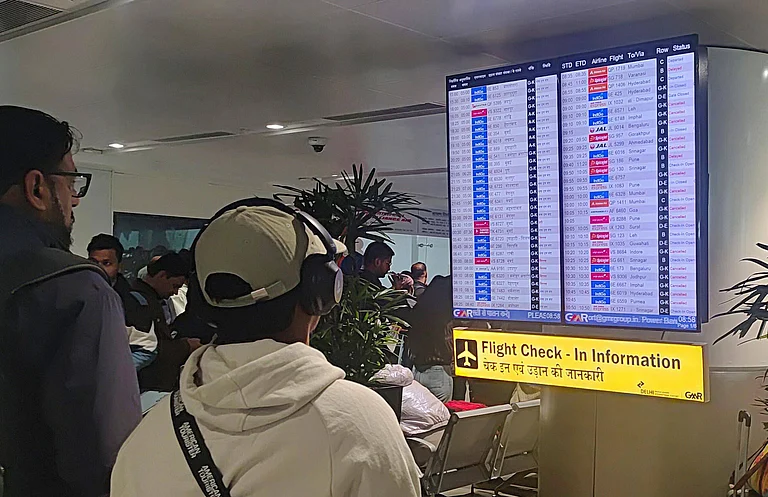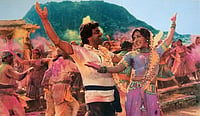It is bad enough that our sense of this city is half-baked, a vague fondness for imperfectly known places, it's even worse when these places disappear or are made unrecognisable in the name of development, road-widening, Master Plans, gentrification and greed.
Majestic, for example, the first theatre in Delhi to show films, was demolished a few years ago. This landmark from the colonial history of Chandni Chowk was erased-but at least there some people raised an outcry, the erasure was noticed. That's because theatres are public places visited by thousands of people: my mother was one of hundreds to have seen Alam Ara, the first Indian talkie, in Majestic.
But there are dozens of buildings-tombs, mosques, gateways, parks, wells, sarais-that vanish without our knowing...because we didn't know that they were there in the first place. And why didn't we know? Because they weren't named, described, mapped or discussed. Or if they were, these maps and surveys were out of print, buried in archives and municipal offices, or written in languages (like Urdu) which the people who mattered in independent India couldn't or didn't read. So large parts of Delhi's built heritage became obscure. Zauq's burial place became famously a municipal lavatory and Ghalib's house a coal merchant's shop.
Delhi, The Built Heritage: A Listing, is exactly what its title says it is. It is a listing, a stocktaking of what its authors believe are the notable structures that together constitute Delhi's built heritage. The two handsome volumes published by the Delhi chapter of Intach with generous support from the Delhi Development Authority, the department of archaeology, Government of India and Eicher Goodearth Ltd, are a comprehensive inventory of the extant buildings that Delhi needs to cherish and preserve. Narayani Gupta, a historian of Delhi and Ratish Nanda, an architect with a specialisation in the conservation of historic buildings, have told us exactly what, as citizens, we have in the way of cultural and historical capital.
There are more than 1,200 entries in these two volumes. Each entry has a photograph at the head and below it, as in a form, details of location, ownership, function status, physical description, decorative features, historical significance, the materials of which the building is made, its state of preservation, its approximate date of construction and a grading or assessment of its historical, architectural or archaeological value. Every building listed is clearly plotted on maps derived from Eicher's superb digitised City Map. The listing surveys structures built up to 1947.
Think for a moment, of what this listing means. It means that town planners, the Archaeological Survey of India, the Delhi Development Authority, concerned citizens, foundations that wish to fund conservation projects, travel agents, tour guides, historians have a ready reckoner that can be used as an aid to policy, as a baseline from which to measure progress or decay, as a point of departure for research, recreation and furious argument.
For argument there will be. Nanda, who photographed every building, and Gupta who advised him, are absolutely clear that the listing is the bare bones of Delhi's architectural past and as such, an invitation to research and conservation. That said, how good a list is it?
It's amazing how exhaustive it is. The reference for many of its medieval sites is the asi list, Hindu and Mohammadan Buildings of Delhi, prepared by Maulvi Zafar Hasan and published in four volumes between 1916 and 1922. But in the last eight decades many of the monuments listed in that work have disappeared or altered beyond recognition. One great virtue of this book is that what remains has been systematically documented. Nanda recounted with a grin the times he had his camera snatched and rolls exposed by angry house owners who suspected he had designs on their property. Occasionally he had to use a Muslim alias to gain entry. Sometimes he had to snap pictures furtively, from awkward angles. But the pictures serve their purpose: they show us what the site looks like now.
But more than the medieval monuments, the great service that this book does is to list notable examples of colonial architecture. Much of what was built in the 19th and 20th century is routinely built over because it is considered too young to be historical.
A few quibbles, to prove that my enthusiasm is discriminating. Gurudwara Sis Ganj is dated late 17th century. This seems extremely improbable given that Guru Tegh Bahadur, whose martyrdom this gurudwara commemorates, was beheaded in 1675. It is hard to see Aurangzeb arranging the decapitation and sanctioning the gurudwara around the same time. Also, it's careless to suggest that Begum Samru's palace was bought by Bhagirath after her death because she died in the middle of the 19th century and her mansion became Bhagirath Palace in the early 20th.
So much for criticism. This is a magnificent pair of volumes and should be a model for the work of listing every Indian city should do. O.P. Jain, who was the moving spirit behind these volumes, Narayani Gupta who had the sensibility and knowledge to conceive of its scope and author Ratish Nanda, who walked the streets of Delhi, looking and recording with an architect's discrimination and a Dilliwallah's love, deserve our unqualified gratitude.
























